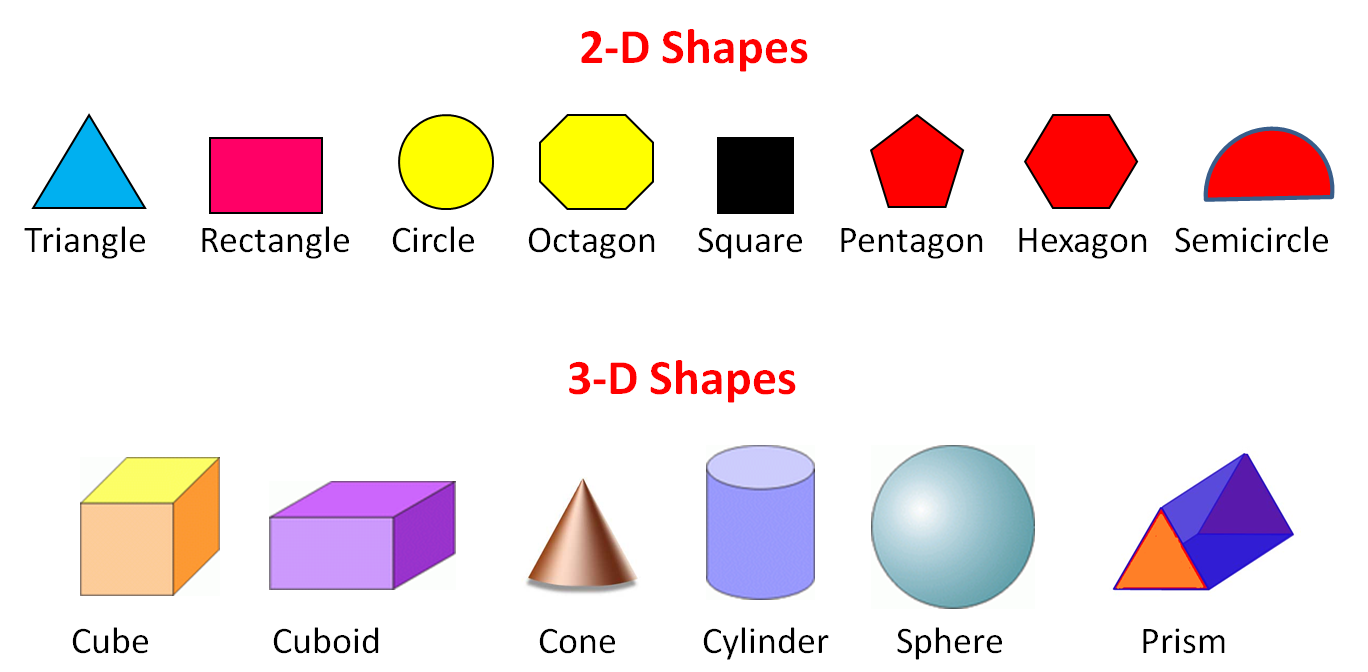
Recognize and draw shapes having specified attributes, such as a given number of angles or a given number of equal faces.

Compose two-dimensional shapes (rectangles, squares, trapezoids, triangles, half-circles, and quarter-circles) or three-dimensional shapes (cubes, right rectangular prisms, right circular cones, and right circular cylinders) to create a composite shape, and compose new shapes from the composite shape.Analyze and compare two- and three-dimensional shapes, in different sizes and orientations, using informal language to describe their similarities, differences, parts (e.g., number of sides and vertices/”corners”) and other attributes (e.g., having sides of equal length).Identify shapes as two-dimensional (lying in a plane, “flat”) or three-dimensional (“solid”).Here’s what is expected to be taught 3D shapes, separated by grade: 3D shapes in Kindergarten Geometry is taught in every grade in elementary school. Read more: 2D And 3D Shapes: Properties of Shapes When will children learn about 3D shapes in school? A hexagonal prism has 8 faces, 18 edges and 12 vertices.A pentagonal prism has 7 faces, 15 edges and 10 vertices.A cuboid has 6 faces, 12 edges and 8 vertices.A cube has 6 faces, 12 edges and 8 vertices.A triangular prism has 5 faces, 9 edges and 6 vertices.A cylinder has 2 faces, 1 curved surface and 2 edges.A square-based pyramid has 5 faces, 8 edges and 5 vertices.


It’s worth knowing that geometrically, prisms incorporate more solid shapes than you might traditionally think of as prisms. In elementary school, your child will learn about the following key geometric shapes: spheres, cones, prisms, cubes, and cylinders.

This contrasts with 2D shapes where children must learn about both regular and irregular shapes. However, children only need to know the names and understand the properties of the most common 3D shapes. Nearly everything we see and interact with in our day-to-day lives is a three-dimensional shape, from Lego bricks to sunflowers. 3D shapes exampleĮxamples of 3D shapes are around us all the time. Examples of dimensions include length, width or breadth, depth and height. We normally talk about dimensions as measurements in a direction. What does 3D mean?ģD in 3D shapes stands for 3-dimensional. 3D shapes are multidimensional and can be physically held. An example of a 3D shape is a prism or a sphere. How do 3D shapes relate to other areas of math?ģD shapes are shapes with three dimensions, such as length, width, and height.In 3rd, 4th, and 5th grades, the standards focus on 2D shapes….When will children learn about 3D shapes in school?.


 0 kommentar(er)
0 kommentar(er)
